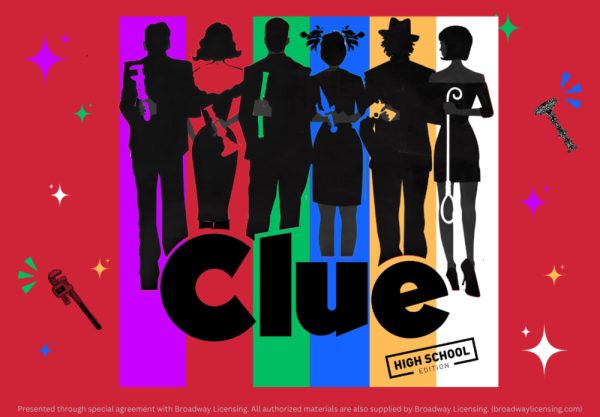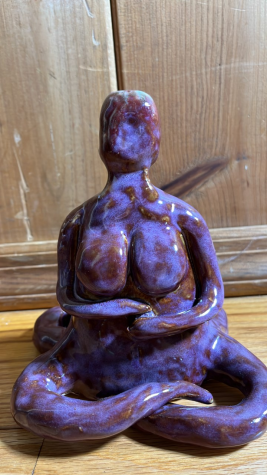Write a Zombie Narrative
8 Tips to Bring Your Dead Narrative to Life
If you dare venture into the depths of the freshman hallway, you may glimpse, at the end of the tunnel, a breath of light escaping from beneath Ms. Grande’s door into the moist, uncrustable-scented air. Beyond the door, sits a circle of upperclassmen, each crouched over a tower of dead narratives – dead narratives they are about to tear apart, to splice together, to bring to life!
In other words, Ms. Grande’s AP Lang class is wrapping up a unit on narrative writing. In this brief guide, I share with you a few unexpected lessons we learned along the way.
1) Stamp it.
Context is like a stamp. In its simplest form, it tells your reader when and where the events take place. Context is also like the punchline of a joke; if you give it away too quickly, it ruins everything. In the opening lines of your narrative, it’s best to give your reader a glimpse of the context without giving every detail away. RHS junior Katie Hall uses context to hook the reader:
All roads lead to Madrid. If you look at a road map of Spain you will see, every road in Spain leads directly to Madrid like veins to a heart. Maybe this was why they decided to strike there.
These opening lines reveal just enough context to leave the reader with questions. The reader knows the narrative takes place in Madrid, but the reader is left wondering when is the narrative taking place? Who are going to strike Madrid? What is going to happen?
Katie continues, revealing more of the context: It was the summer of 1985 and a giddy group of newly graduated high school students sat in warm, dusty dormitories.
By the time you finish reading the narrative, and only then, can you get a full picture of the events. This technique grabs your readers attention and holds it until the author lets go.
2) Kill the overkill.
When it comes to description in a narrative, more is better than less. But the effectiveness of description has its limits. If you describe nothing, your narrative is boring. If you describe everything, description loses its power. Here, RHS junior Helen Fleming choses what to describe and what not to describe:
When I first brought the scissors to my head and made the first hacking, scraping cuts, the ache in my bones dulled to a tuneful hum.
The sentence is about the act of cutting her hair, so Helen places hacking and scraping before cuts to emphasize the most important part of the sentence: cutting. The sentence is not about the scissors, so Helen chooses not to describe scissors. By carefully selecting which details to include (and not include), Helen focuses the reader’s attention, controls the impact of each element of the story.
3) Forget sentence structure. And remember it.
Your narrative’s priority is to be unique, to be interesting. In order to achieve this purpose, your narrative can break the rules. Your narrative can include sentences that aren’t actually sentences, also known as sentence fragments. Here, RHS junior Jillian Holen sets a scene with sentence fragments:
Head on collision. Unconscious driver drifting into highway divider. Car demolished after plowing through a red light.
Jillian’s “sentences” do not follow grammatically correct sentence because they don’t have to. It’s clear that Jillian is listing examples of roadway tragedy. Moreover, Jillian’s choice of sentence fragments emphasizes the drama of the scenes she describes. In a narrative, dramatic effect is more important than following every grammatical convention.
4) Repeat. Repeat. Repeat?
Have you ever done a Mad Lib where the only adjective you use is “good”? I hope not. That would be the most boring Mad Lib ever. What a waste of time. Clearly, repetition can be grossly unimaginative. But it doesn’t have to be. In narratives, writers often use repetition to build momentum, to make a point.
In the narrative Tubing, RHS senior Marissa Giamportone repeats variations of the pattern Hard left, relax, coast, hard right, relax, coast. Through these words, Marissa evokes the constant motion of tubing, transporting the reader into the story.
If you find yourself repeating a word or phrase over and over again, ask am I doing this on purpose? If the answer is yes, great. If not, hit Google up for synonyms.
5) Say it out loud.
For centuries, history existed by word of mouth. Stories were told, not written. Now, we write our stories down, and we rarely say them out loud. But there is immeasurable benefit to reading your piece to yourself, your sister, or your judgemental dog before you hand in the final copy. In narratives, a vocal read can help you pinpoint the purpose of your piece. This was the case as I read aloud a dialogue between myself, my sister, and my mom:
“If the window was half-shattered in the Russian winter, how did you not freeze to death?”
Lizzy turns to me, exasperated. “Blankets, you idiot.”
“Girls, please.”
Under the reproachful gaze of my little Boston terrier, I realized the purpose of my narrative: not only to entertain, but to describe my relationship with my mom and my sister. After that realization, I was able to make the narrative more than a story of cheap thrills in Russia.
Reading your work out loud can help you identify your its weakness, its strengths, its purpose.
6) Give it a weird title.
Your title is the pre-hook. The actual hook lodges itself in the first couple sentences of your narrative. But before your readers decide whether or not to read your actual hook, they read the title. The title has to grab them. Here are a few examples of gripping titles.
- Buzzcut Introspection by Helen Fleming (This is an interesting title because it pairs contrasting ideas: an ordinary haircut with extraordinary thought.)
- The Reality of Road Rage by Jillian Holen (This title interests me because it uses a literary device: alliteration.)
- I Hope by me (I chose this title because it prompts a question: What do you hope?)
If you really have no idea what you should name your piece, don’t overthink it. Choose your favorite word/phrase from your narrative, paste it at the top your Google Doc, move on with your life. Name it anything. Anything is better than nothing.
7) Get out.
There are many ways to end a narrative effectively. Your narrative can go out with a soulful hmm or with a punchy BANG. Either works and works well. One of my favorite endings is the final line of RHS senior Olivia Fajardo’s narrative Watering Hole:
I finally felt at peace in the dark.
It’s such a tranquil sentence. As Olivia leaves her story in the dark, she leaves her reader in the dark, alone to consider the meaning of the story, to contemplate the happy ending.
I appreciated this approach to concluding the narrative because I often go the opposite way, ending my narratives with raw statements. As an example, I ended my narrative Stay Alive with these lines: But I don’t get to decide when I live or when I die. My boiler does.
The most important part of ending a narrative is to end it. If you feel it dragging on, say something thought-provoking and get out.
8) Share it.
During the narrative unit, every AP Lang student shared each one of their narratives aloud. Before I read my first narrative, kamikaze butterflies were hurling themselves into my ribcage. I was nervous. To me, my first narrative was the paper reincarnate of roadkill. It was dead. But as I began to read, my words awoke from their eternal sleep. And as my listeners shared their comments, my narrative came alive.
I have given you eight random tips – eight tips, I said, that would bring your dead narrative to life. But I lied. Your narrative won’t come alive until you let it walk among the living, until you share it with the people in your life. In the end, this is the only tip that matters.











